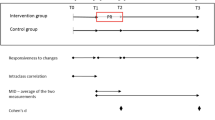Abstract
OBJECTIVE: To investigate peak expiratory flow rate (PEFR) and quality of life scores for their ability to predict exacerbations of asthma.
PARTICIPANTS AND METHODS: We identified adults who received oral or inhaled asthma medications from 36 community drugstores. We administered the McMaster Asthma Quality of Life Questionnaire (AQLQ) and measured PEFR, defining “red zone” (highest risk) as a PEFR <50% of each patient’s expected value based on gender, age, and height. We identified asthma exacerbations (breathing-related emergency department visits and hospitalizations) within 4 and 12 months after enrollment and used proportional hazards regression to assess the ability of PEFR and AQLQ scores to predict exacerbations, controlling for clinical and demographic factors.
RESULTS: A red zone PEFR was a significant universiable predictor of exacerbations within 12 months (hazard ratio [HR], 1.8; 95% confidence interval [CI], 1.1 to 3.0; P=.027). However, neither a red zone PEFR, the raw PEFR, or percent of predicted maximal PEFR were significantly predictive when controlling for AQLQ scores, clinical characteristics, or demographic data (P<.2). However, the 4 subscales of the AQLQ were each significant univariable and multivariable predictors of asthma exacerbations. For example, the overall AQLQ scale had a multivariable HR of 0.63 (95% CI, 0.46 to 0.87; P=.005) for exacerbations occurring within 4 months and 0.66 (95% CI, 0.54 to 0.82; P<.001) within 12 months.
CONCLUSIONS: PEFR added no predictive information to that contained in AQLQ scores and clinical and demographic data. These results support the National Institutes of Health asthma guidelines’ recommendation for routinely assessing symptoms but not PEFR.
Similar content being viewed by others
References
Weiss ST. Asthma: Epidemiology. In: Fiskman’s Pulmonary Diseases and Disorders, 3rd edn. New York, NY: McGraw-Hill; 1998:735–43.
Mannino DM, Homa DM, Pertowski CA, et al. Surveillance for Asthma—United States 1960–1995. MMWR CDC Surveill Summ. 1998;47:1–27.
National Heart, Lung, and Blood Institute. National Institutes of Health. Data Fact Sheet: Asthma Statistics. Available at: http://www.nhlbi.nih.gov/health/prof/lung/asthma/asthstat.pdf. Accessed January 9, 2003.
Fish JE, Peters SP. Asthma: clinical presentation and management. In: Fiskman’s Pulmonary Diseases and Disorders, 3rd edn. New York, NY: McGraw-Hill; 1998:757–75.
Donahue JG, Weiss ST, Livingston JM, Goetsch MA, Greineder DK, Platt R. Inhaled steroids and the risk of hospitalization for asthma. JAMA. 1997;277:887–91.
Blaiss L, Suissa S, Boivin JF, Ernst P. First treatment with inhaled corticosteroids and the prevention of admissions to hospitals for asthma. Thorax. 1998;53:1025–9.
Barnes PJ, Jonsson B, Klim JB. The costs of asthma. Eur Respir J. 1996;9:636–42.
Balkrishnan R, Norwood GJ, Anderson A. Outcomes and cost benefits associated with the introduction of inhaled corticosteroid therapy in a Medicaid population of asthmatic patients. Clin Ther. 1998;20:567–80.
American Thoracic Society. Standards for the diagnosis and care of patients with chronic obstructive pulmonary disease (COPD) and asthma. Am Rev Respir Dis. 1987;136:225–44.
Jain P, Kavuru MS, Emerman CL, Ahmad M. Utility of peak expiratory flow monitoring. Chest. 1998;114:861–76.
Expert Panel Report 2. Guidelines for the Diagnosis and Management of Asthma. National Heart, Lung, and Blood Institute. National Institutes of Health Publication no. 97-4051; 1997.
Richards JM, Hemstreet MP. Measures of life quality, role performance and functional status in asthma research. Am J Respir Crit Care Med. 1994;149:S31-S9.
Weinberger M, Murray MD, Marrero DG, et al. A pharmaceutical care program for patients with reactive airway disease. Am J Health Sys Pharm. 2001;58:791–6.
Weinberger M, Murray MD, Marrero DG, et al. The effectiveness of pharmaceutical care for patients with reactive airways disease: a randomized, controlled trial in community pharmacies. JAMA. 2002;288:1594–602.
Badgett RG, Tanaka DJ, Hunt DK, et al. The clinical evaluation for diagnosing obstructive airways disease in high-risk patients. Chest. 1994;106:1427–31.
Steiner J, Koepsell T, Fihn S, Inui T. A general method of compliance assessment using centralized pharmacy records. Description and validation. Med Care. 1988;26:814–23.
Juniper EF, Guyatt GH, Epstein RS, Ferrie PJ, Jaeschke R, Hiller TK. Evaluation of impairment of health related quality of life in asthma: development of a questionnaire for use in clinical trial. Thorax. 1992;47:76–83.
Juniper EF, Guyatt GH, Ferrie PJ, Griffith LE. Measuring quality of life in asthma. Am Rev Respir Dis. 1993;147:832–8.
McDonald CJ, Overhage JM, Tierney WM, et al. The Regenstrief Medical Record System: a quarter century experience. Int J Med Inf. 1999;54:225–53.
Nunn AJ, Gregg I. New regression equations for predicting peak expiratory flow in adults. Br Med J. 1989;298:1068–70.
SAS. Version 6.12. SAS Institute Inc., Cary, NC.
Rutten-van Molken MPMH, Custers F, Van Doorslaer EKA, et al. Comparison of performance of four instruments in evaluating the effects of salmeterol on asthma quality of life. Eur Respir J. 1995;8:888–98.
Gruffydd-Jones K. Quality of life measures in asthma—do they matter to the GP?. Br J General Pract. 1997;47:392–4.
Juniper EF, Guyatt GH, Willan A, Griffith LE. Determining a minimally important change in a disease-specific quality of life questionnaire. J Clin Epidemiol. 1994;47:81–7.
Couturaud F, Proust A, Frachon I, et al. Education and self-management: a one-year randomized trial in stable adult asthmatic patients. J Asthma. 2002;39:493–500.
Toelle BG, Ram FS. Written individualised management plans for asthma in children and adults. Cochrane Database Syst Rev 2002:CD002171.
Kamps AW, Brand PL. Education, self-management and home peak flow monitoring in childhood asthma. Paediatr Repair Rev. 2001;2:165–9.
Author information
Authors and Affiliations
Corresponding author
Additional information
This study was supported by grant HS-09083 from the Agency for Healthcare Research and Quality. Dr. Roesner was supported by training grant T32-HL07774 from the National Heart, Lung, and Blood Institute.
An erratum to this article is available at http://dx.doi.org/10.1111/j.1525-1497.2004.04198.x.
Rights and permissions
About this article
Cite this article
Tierney, W.M., Roesner, J.F., Seshadri, R. et al. Assessing symptoms and peak expiratory flow rate as predictors of asthma exacerbations. J GEN INTERN MED 19, 237–242 (2004). https://doi.org/10.1111/j.1525-1497.2004.30311.x
Issue Date:
DOI: https://doi.org/10.1111/j.1525-1497.2004.30311.x




